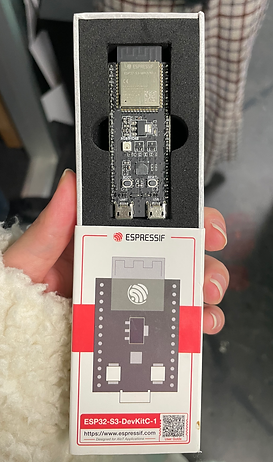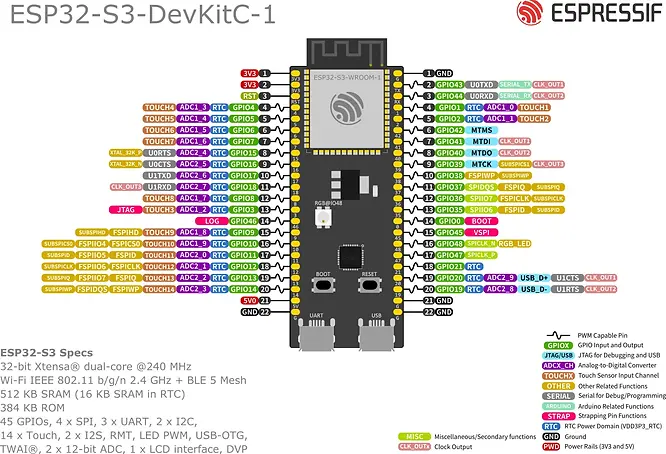Intro: ESP32
The ESP32 is a powerful, low-cost microcontroller designed for IoT (Internet of Things) applications, embedded systems, and interactive projects. It is an ideal choice for projects requiring wireless connectivity, real-time processing, and power efficiency. Due to its versatility, the ESP32 is widely used in applications ranging from smart home automation to interactive art installations.
One of the ESP32’s key strengths is its compatibility with multiple programming environments, including the Arduino IDE, MicroPython, and ESP-IDF (Espressif IoT Development Framework). This flexibility allows both beginners and experienced developers to create innovative projects efficiently. Its integration with TouchDesigner and MAX MSP further expands its potential in interactive media. It allows artists and designers to bridge physical and digital experiences. ESP32s are also very fast and are specifically designed for large amounts of touch-interactivity, making them (and their low prices) a great option when compared to other types and brands of microcontrollers.
By leveraging ESP32's connectivity and quick processing capabilities, we can create interactive systems that blend real-world sensors with digital environments, offering new possibilities for cultural storytelling and identity exploration.


Resources
Introduction to ESP32
Overview of ESP32 features, architecture, and applications.
What is a Microcontroller?
General explanation of microcontrollers and their role in computing.
Getting Started with ESP32 on Arduino IDE
Steps for setting up ESP32 with Arduino IDE.
Getting Started with ESP32 on MAX MSP
How to connect ESP32 with MAX MSP for audio-touch interaction.